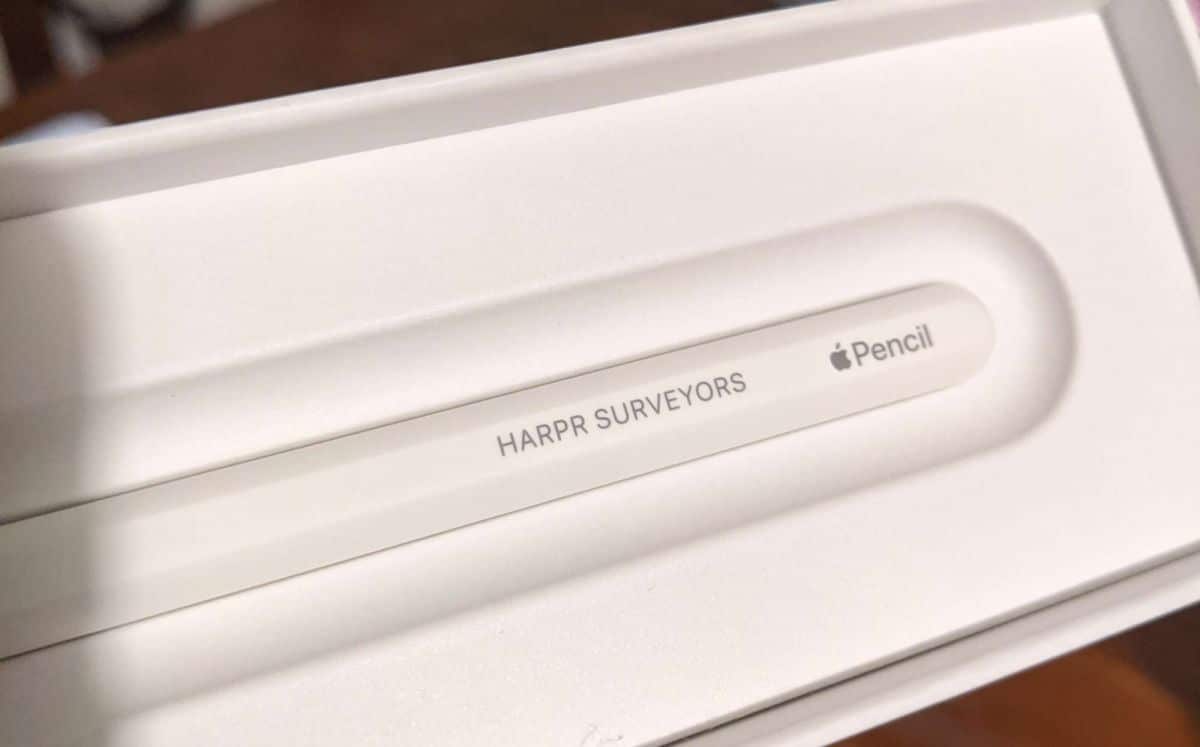Industry expertise
Harpr Surveryors
Harpr Surveyors work closely with architects, interior designers, property developers and estate agents across the South of England providing a range of services that save them time and are cost effective.


Harpr Surveyors work closely with architects, interior designers, property developers and estate agents across the South of England providing a range of services that save them time and are cost effective.

I started my career in my late teens whilst studying at university by deciding to take a position at a property marketing firm where I was trusted to survey and photograph properties prior to marketing. This became a passion of mine and I pursued the industry, this then matured into more detailed and specific plans surrounding commercial and residential dwellings at various companies.
With over 14 years of experience in the field and the knowledge gained working in London, my partner and I formed Harpr Surveyors at the tail end of 2018 and relocated to rural Cornwall in March 2020 after establishing a good foundation and reputation. We work closely with architects, interior designers, property developers and estate agents across the South of England providing a range of services that save them time and are cost effective.
Existing domestic dwellings are required to have an EPC prior to sale or rental and the process of obtaining one is simple. Speak to an energy assessor by finding one on the Gov.uk website, they will organise and visit at a suitable time to collect the data that is required and then lodge the certificate to be viewable on the Gov.uk website.
Since September 2020, EPCs are now accessible through the Government’s website and no longer sent in PDF format. Each EPC has its own unique certificate number and can be found easily either with this reference or the post code. We provide EPCs to properties all across Cornwall, typically with a same day turnaround.
Understanding the property, how it currently performs and the elements that make the thermal envelope are the first steps to make a home more energy efficient. It is advised that a whole house approach is used when improving the property as this will reap the most benefits this way.
For example, if someone were to purchase an Air Source Heat Pump and have it installed, a few pennies may be saved on heating in the home but if this is coupled with existing single glazed windows, a greater reward would be seen had they simply replaced the glazing with thermally efficient units. Assessing the property as a whole would outline these factors and allow the owner to make a more informed decision on their purchases.
Along with our EPCs, we offer MEES Reports (minimum energy efficiency standard). These reports are designed to take an underperforming property with a low EPC grade and advise on potential improvements to increase the rating. We can modify these to help with improving a home without the EPC in mind, allowing a broader upgrade plan that works for the property.
Knowing your brief is key. After a conversation with a client, we follow up with a quote based on the requirements and then the details are passed through our online booking system to ensure that we obtain all the necessary information prior to the service.
New clients quickly turn into revisiting ones and each firm Harpr Surveyors provides drawings to have their own preference on how they want their plans to appear making subsequent projects easier and quicker to produce whilst maintaining accuracy.
Although we do not directly offer advice on how to convert a property, we are extremely efficient at providing plans to accompany any new leases that are to be made due to the creation of new flats.
These plans can be created before the renovation of a project is completed, allowing the newly created units to be sold quicker. Providing we can access the site and safely obtain the necessary measurements, we can create the Land Registry compliant lease plans to the clients specifications by outlining the specific areas they denote.
Upon arrival at a property and after a quick look around to familiarise myself with the layout, I’ll pick up the iPad and start sketching the property. Whilst going from floor to floor, I’ll record all the details that the client needs on the plan and store it safely.
Many projects we complete require a complete photographic survey to be done at the time of the site visit to enable the architect, interior designer or project manager to reference the drawing. This allows anyone within their team who has not yet seen the property to understand the elements and features within.
Before our surveyor returns to the office, we’ve started using the sketches and site notes to compile the plan using CAD software. All of our scale plans are delivered in PDF and DWG format to enable further amendments the client wishes to make themselves or to pass onto an architect for their use.
Our retrofit assessments are conducted in accordance with PAS 2035 which is a comprehensive document in the retrofit standards framework. It provides a specification for the energy retrofit of domestic buildings and details the best practice guidance for domestic retrofit projects.
There are five roles within the retrofit process: advisor, assessor, coordinator, designer and installer. We are step 2 in that we carry out the retrofit assessments and report to the coordinator who is qualified as a specialist retrofit project manager, taking overall responsibility for the elements of the retrofit process.
The retrofit assessment contains three documents, an energy report, similar to an EPC but containing an increased amount of detail, a condition report consisting of information about the whole condition of the property and finally an occupancy assessment, this looks at the usage of the property made by the people who reside within it.
All of the recorded information is stored in a data warehouse and is accessible by the relevant people in the retrofit process.
In addition to our quality promise, we are registered with Trustmark, a Government endorsed quality scheme and Elmhurst, the body that provides the facility to complete the assessments.
Scale floor plans are different from the floor plans you see used in estate agents sales particulars. Scale plans are just that, floor plans that have been drawn to a particular scale whilst ensuring that all the elements of the property are appropriately drawn in relation to one another.
Doing this allows an interior designer to mark up drawings with fixtures and furnishings, making sure the furniture works within a given space. Knowing the absolute size of a room or space gives the designer more freedom in the placement of items and certainty that their design is accurately represented.
We provide scale floor plans to interior designers and architects all across the South of England from Conwall to Kent and aid them in their task to create amazing spaces.
Depending on the complexity of the plan needed, we can include practically anything including sockets, switches, outlets, joist orientation, drain covers, rain water pipes, soil pipes and door, window and sill heights to name a few. Providing that we can assess the detail that needs to be noted on the plan, we can include it.
Different details help different applications, for example unless an interior designer is altering the spaces between floors, joist orientation is generally not needed whereas a property developer would see it as a necessary detail to know.
Our lease plan template has been specifically designed to minimise the rejection of a submission to the Land Registry. We have developed this design to include an Ordnance Survey location map as set out in the guidance provided in PG40s5 to keep all the information contained in one single page document.
Our lease plans are scaled in a way to enable them to be printed at A4 – we do this to enable our clients to be able to print the documents at home.
Similar to lease plans, our deed of variation plans are drawings that show an updated view or change to a property. These documents accompany an existing lease to show the change or variation. To be consistent and accurate, we recommend a site visit by one of our experienced surveyors to assess the space and record the differences.
We work closely with clients’ solicitors to complete these documents and ensure that the change is correctly displayed before the ‘for use’ version is issued.
Luckily, I’ve never had to work with measuring tapes or yard sticks and have always had laser equipment from Leica. I’ve found Leica to be responsive and accurate when it comes to their measuring devices and would not go anywhere else to find an alternative.
As time has progressed, technology has too and we use some of the latest laser technology Leica has to offer in terms of their Disto range. Recently we have explored some of their other surveying equipment including their BLK3D device which allows us to take a photo of a facade or wall and measure directly off of the image. Not only does this save time on site, it allows us to get more measurements than were previously possible.
We’ve recently ditched the pencil and paper for iPad Pro’s and Apple Pencils to cut down on our paper usage and it means all of our site notes and sketches are digitally stored in the cloud instantly.
We are soon to be using point cloud data from Leica’s BLK360 to once again cut down site time, increase accuracy and to be able to provide topographical surveys.

Sections and external elevations are technical drawings of a vertical slice and facade of a building respectively. Sections are used to show the relation between rooms through the height of the building and elevations show what the building looks like from a particular viewpoint.
Both are used closely with before and after works to easily show the comparison between what a building looks like and what it will look like.
Internal elevations are similar to their external partner but show the details that are attached to a particular wall in one room. Typically, fixed details such as outlets, radiators and windows are displayed on internal elevations to aid an interior designer to clearly see where they can place their creations.
A good majority of the cases where we are asked to create Land Registry compliant lease plans, the urgency to get them back to the solicitor is high. If a homeowner has been informed that they need a plan to accompany their lease, they can rest assured that we can deliver a compliant lease plan within a fast time frame.
There are numerous reasons as to why you would need a new or updated lease plan but some reasons may be that you’ve portioned off and sold some of your land, the parking spaces in an apartment building are being assigned or even that the old paper copy you have simply doesn’t comply with the latest guidelines from the Land Registry.
We can have a conversation via phone or email outlining the property details and the requirements and swiftly move to measure the site and return your plan in as early as 24 hours.